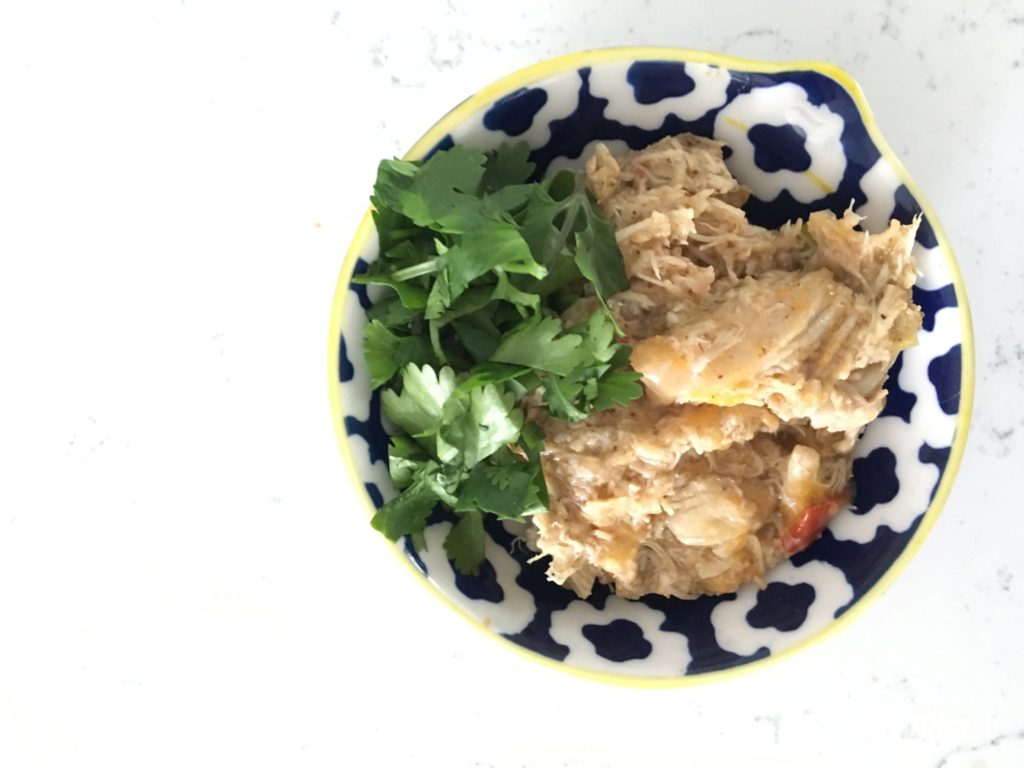We live in a busy world and my clients are always listing time, convenience, and budget as their biggest constraints on healthy eating. When cooking is the last thing you want to think about, the amazing slow-cooker is your best friend. First introduced to the world in 1950 and mass-marketed in the 1970s, this piece of kitchen equipment has stood the test of time and is a staple in many a household. In most cases, you truly can dump ingredients in the large ceramic vessel, cover, and forget about it for the day – coming home to a homemade meal, house that smells divine, and still have time to spend with your family and friends.
This pulled chicken recipe is so easy. The only prep you have to do is mince the garlic and adobo pepper and thinly slice the scallions. If you’re feeling extra lazy, buy minced garlic in a jar. Serve it with a couple corn tortillas, cabbage slaw with a vinegar base, fresh avocado slices, and cilantro leaves for a healthy and easy dinner perfect for staying in or entertaining a crowd (chicken thighs keep the cost down!).

SLOW-COOKER PULLED CHICKEN
Ingredients:
- 4 pounds boneless skinless chicken breasts
- 1 cup white wine
- 1 bunch of scallions, thinly sliced using green and white parts
- 4 cloves garlic, peeled and minced
- 2 chipotle in adobo sauce, minced
- 1 Tbs cumin
- 2 tsp chili powder
- 1/4 cup apple cider vinegar
- Sea salt and pepper to taste
Directions:
- Add the chicken, wine, scallions, garlic, chipotles, cumin, black pepper, chili powder, and salt to the basin of a large slow cooker. Mix with a large wooden spoon to coat chicken in sauce and spices.
- Cook on low for 7-8 hours until the chicken is tender and shreds easily with two forks.
- Serve immediately with tortillas or atop brown rice and greens in a bowl.
- You can refrigerate this recipe in an air-tight for up to 5 days, or freeze it in an air-tight container for up to 3 months (be sure to label it!).



